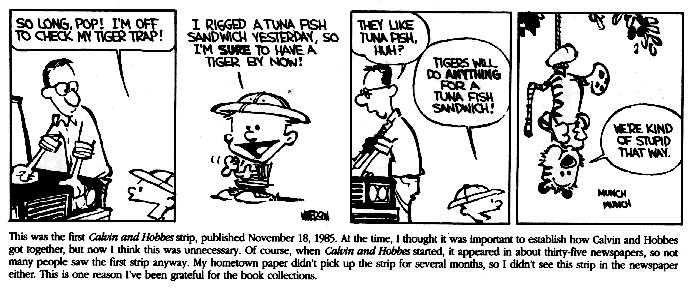Oz through the Comics, Comics through Oz
At the end of Oz and Ends's first COMICS WEEK, I'm circling back to Oz. It might be possible to track every major thread of American popular culture through versions of Oz. Within a decade after L. Frank Baum and W. W. Denslow published The Wonderful Wizard of Oz in 1900, it had already inspired a blockbuster Broadway show, movies, records, and--what else?--comics. In fact, looking at the earliest Oz comics offers a window onto how that medium developed.
The first entry was the Queer Visitors from the Marvelous Land of Oz comics page, written by Baum and illustrated by Walt McDougall, an established newspaper cartoonist (more samples here and here). That comic was created to publicize The Marvelous Land of Oz (1904), and built around that book's grotesque characters: the Scarecrow, Tin Woodman, Jack Pumpkinhead, Sawhorse, Gump, and Woggle-bug. But those gentlemen and animals weren't in Oz. No, they were traveling around America, learning our strange ways.
To fill a page in each Sunday's paper, Baum wrote a short story and McDougall illustrated the tale with a series of panels packed with characters and speech balloons--some echoing the dialogue in Baum's prose, some new. Each episode ended with the thoroughly educated Woggle-bug about to answer some mystery the tale had brought up. In an interactive feature, readers were invited to mail their local papers the answer to the weekly question, "What did the Woggle-bug say?" Queer Visitors was therefore not quite a comic, and its stories were not quite stories. It lasted not quite half a year.
[ADDENDUM: Some panels from Queer Visitors reproduced in color can be found by scrolling down in this page from the BCF archive of Oz book discussions.]
Shortly afterward, Baum's erstwhile collaborator W. W. Denslow, who shared the copyright in The Wonderful Wizard of Oz, spun its most popular characters into his own comics page, Denslow's Scarecrow and Tin-Man. He, too, brought the Scarecrow and Tin Woodman, as well as the Cowardly Lion (whom Baum was neglecting), to America for rollicking adventures. They even meet Dorothy again, though (as shown above) she's much more frilly than before. Denslow's bold, rounded style matches modern tastes in cartooning better than MacDougall's, but his storytelling tended toward the "let's crash vehicles together" style. He also told his story through long captions, not speech balloons. Denslow's comic page lasted twelve installments.
By the time of the next Oz newspaper comic, in 1932-33, the medium had settled into the form we know best today: a short strip of black and white installments in each daily paper. Walt Spouse's The Wonderland of Oz adapted five of Baum's titles into this style. He followed the original stories closely, and based many of his pictures on John R. Neill's illustrations for the books. Spouse's comics still had no word balloons; instead, long prose captions beneath each panel told the stories. Among today's popular newspaper comics only Prince Valiant seems to follow that style. When some Wonderland strips were reprinted in a comic book called The Funnies in 1938-40, they were retrofitted with balloons.
In the last few years Hungry Tiger Press (also publisher of the John Dough and the Cherub pictured at right) has repackaged all three of these Oz comics in book form. Each book's format differs from the original publications, and from the other two, reflecting the strengths of the three sources and modern tastes.
Hungry Tiger Press has turned Queer Visitors into The Visitors from Oz, basically a volume of Baum short stories without McDougall's artwork. Instead, the book has art by the young Eric Shanower, before he received two Eisner Awards (and before his hair turned white).
Denslow's newspaper pages have been reformatted to make a picture storybook, The Scarecrow and the Tin-Man of Oz. That reprints all of Denslow's art, though only in black and white.
Finally, Shanower wrote a new script for Spouse's strips, using short speech balloons and short captions--thus turning those cartoons into more like what we expect from all comics today. Hungry Tiger Press has issued three volumes in the Wonderland of Oz series.
And Oz continues to be adapted into the latest trends in comics. In 2005 David Lee Ingersoll produced this thorough listing of Oz comics from the previous fifty years. And this month over at the Wonderful Blog of Oz, Eric and Tegan have shared news that The Land of Oz will soon be adapted in manga style.



